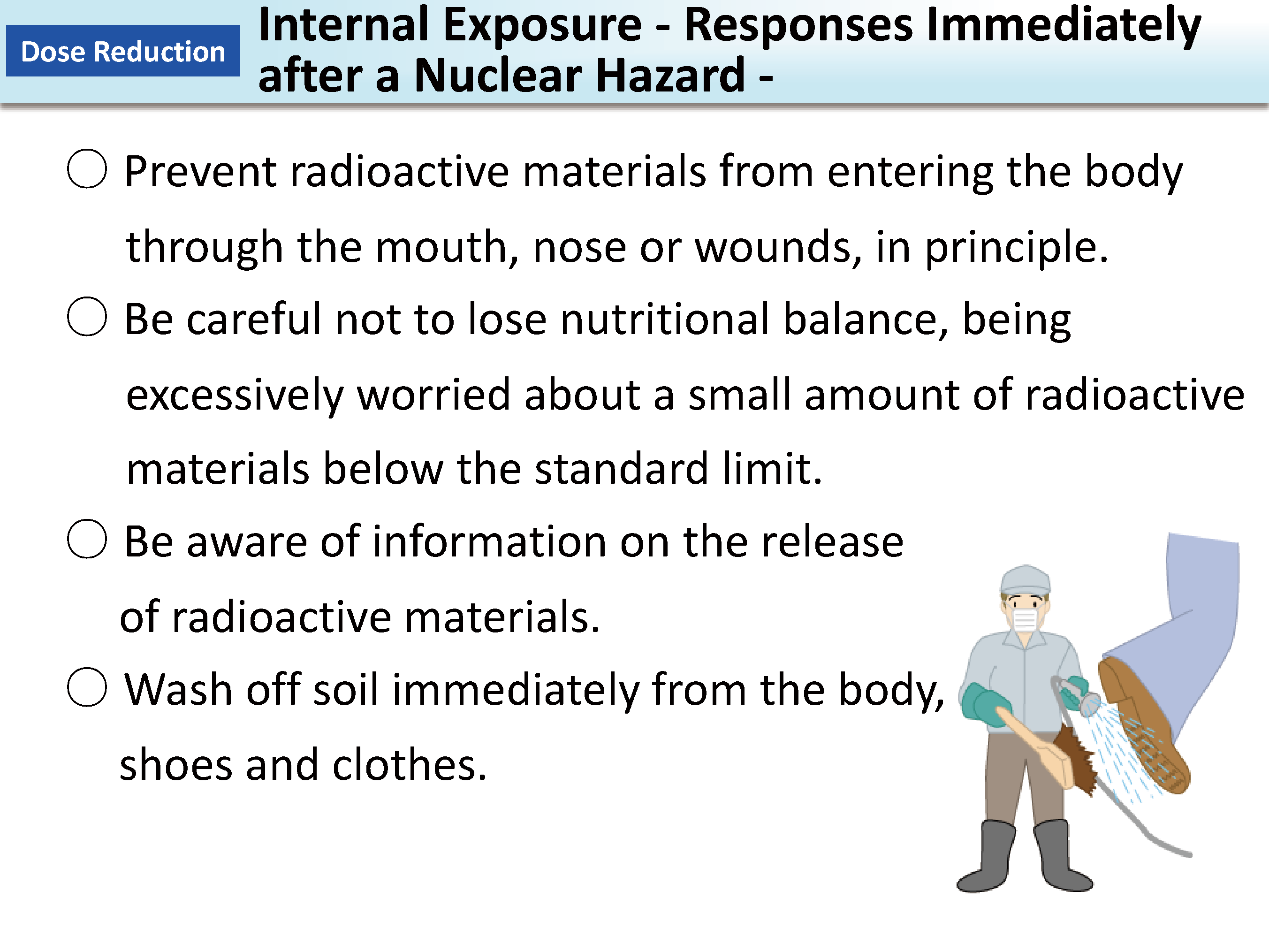Internal Exposure - Responses Immediately after a Nuclear Hazard -
As causes of internal exposure, both inhalation and ingestion of foods need to be taken into consideration. For example, when calculating exposure doses for children engaging in outdoor activities at places with high ambient doses, doses due to internal exposure account for only around 2% to 3% and exposure doses are mostly due to radiation from outside of the body. Therefore, people do not have to be too nervous about exposure through inhalation and proper daily hygienic control (taking a bath, getting a haircut, washing hands, cleaning, and doing the laundry, etc.) is effective in reducing internal exposure to some extent.
In the meantime, regarding the possibility of internal exposure caused by ingestion of foods, attention needs to be paid to foods from which radioactive cesium is detected at high levels. In particular, special attention is required for ferns and mushrooms, which have a property to concentrate cesium. Data on radioactivity concentrations in foods is released by the Ministry of Health, Labour and Welfare and the Ministry of Agriculture, Forestry and Fisheries.
Radioactivity in the body can be measured with a whole-body counter. Some local governments and private hospitals, etc. provide opportunities for checking internal exposures using whole-body counters.
- Included in this reference material on March 31, 2013
- Updated on March 31, 2019

